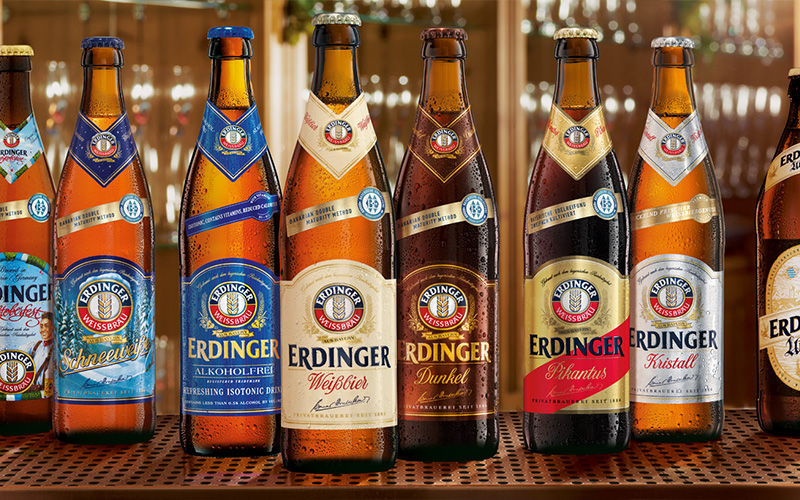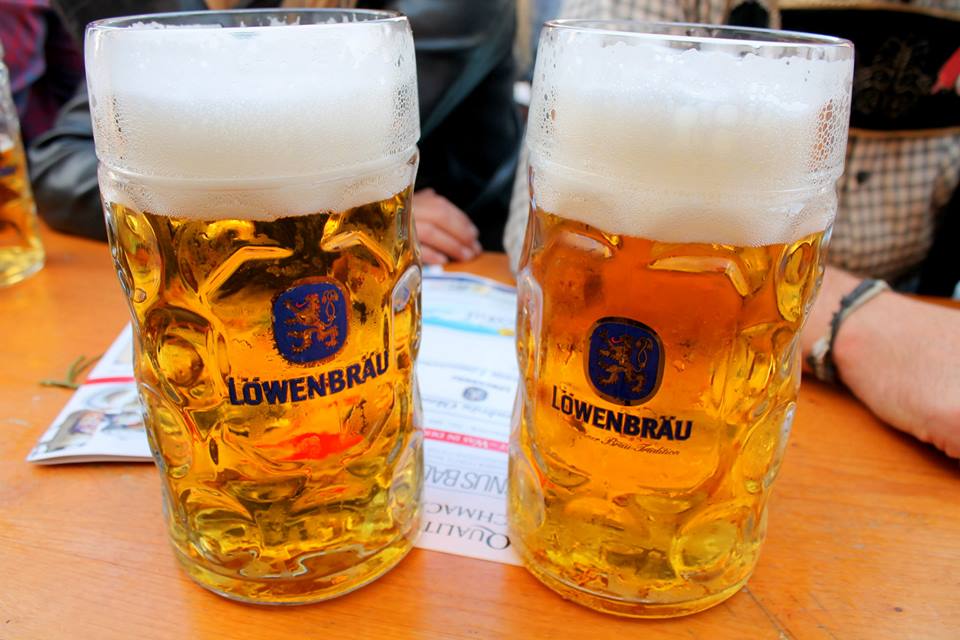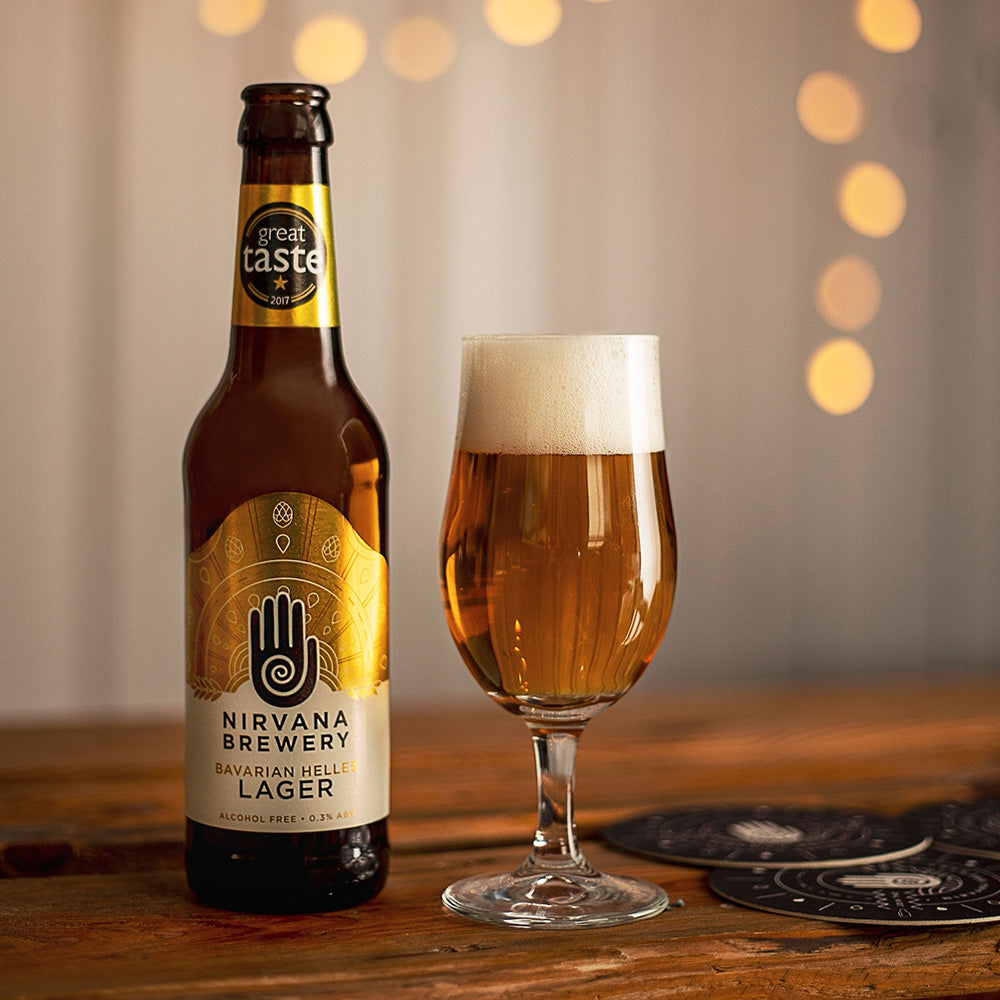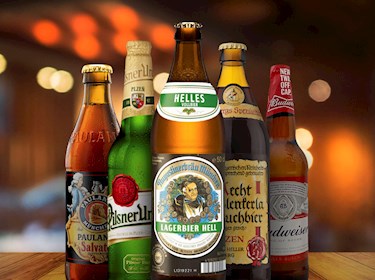At Nachtmann, we take great pride in our Bavarian heritage, and beer is the first beverage that comes to mind when one thinks of Bavarian beverages. Known by another name, Bayerisches Bier, Bavarian beer is a symbol of Germany’s long history of brewing and is highly regarded across the world for its superb flavor and quality. You have an abundance of choices when it comes to great Bavarian beers to sip from your Nachtmann crystal glassware, from deep, dark Dunkel beer to pale, malty Helles beers. We’ll discuss the background of Bavarian beer brewing, common beer styles, and interesting trivia in this blog post series that will wow your friends who enjoy beer.

A BACKGROUND TO BAVARIAN BEER
To begin with, what is a Bavarian beer? Any beer brew in Germany’s Bavaria region is known as Bavarian beer. Situated in the southeast of the nation, this area is home to important cities like Munich and Nuremberg. Additionally, our Nachtmann headquarters are located there in Neustadt a der Waldnaab!
The history of Bavarian beer making dates back to the Middle Ages, a time when monks were important contributors to the craft. Bavaria was a haven for monastic brewers, which developed superior brewing methods and produced great beer. Situated on the Weihenstephan hill in Freising, the Bayerische Staatsbrauerei Weihenstephan was establish as a Benedictine monastery brewery in 1040, making it the oldest brewery still in operation in the world.
A few centuries later, in 1516, a defining regulation for Bavarian beer was established. The Reinheitsgebot, often known as the German Beer Purity Law, was enacted by Bavarian Duke Wilhelm IV. It was a revolutionary law that allowed beer to include just the following four ingredients:
- water
- malted barley
- hops
- yeast.
This regulation, which continues to have an impact on brewing methods today, established the basis for Bavarian beer’s renown for quality and purity.
Beer gardens were introduce in the 19th century, which was another role in the blossoming of Bavarian beer culture. Both residents and guests might enjoy a cold beverage in the middle of nature at these gardens. Furthermore, the region’s passion for beer is demonstrate by the internationally recognize Oktoberfest, which is held in Munich each year and dates back to 1810. In order to commemorate Bavarian beer and culture, people gather from all over the world for this festival, which has cemented Bavarian beer’s status in popular culture.
BAVARIAN BEER STYLES AND QUALITIES
It is hardly surprising that Bavarian brewers create a diverse range of beer kinds, each with their own special attributes and characteristics, given their lengthy history and widespread appeal. Bavaria is home to more than 40 different types of beer, which makes up about 25% of all beer produced in Germany. That’s a bit too many to go into detail about each one, so instead let’s examine a few of the most well-liked looks and what makes them unique:

Bavarian Helles
One of the more recent German beer varieties, Bavarian Helles was first created in the late 19th century in response to the increasing demand for Czech Pilsner-style beers. Pale in color, Bavarian Helles boasts a modest hop bitterness and a well-balanced maltiness. It has a creamy head, a stunning golden hue, and a crisp, smooth flavor.

Helles beer is a popular choice for both locals and visitors due to its easy-to-drink nature, especially on hot summer days. Helles Beer is a great next step if you’re seeking to start broadening your beer palette. If you enjoy lagers, it has similar attributes plus a fuller body.
Weissbier (Wheat Beer)
Produced in Bavaria for several centuries, Weissbier, or “white beer,” is one of the region’s distinctive styles and a longstanding staple of German beer culture. A significant amount of malt wheat is use in the creation of Weissbier, giving it a hazy look and a light, fruity flavor that is frequently enhance by flavors of banana, clove, and other spices.

Weissbier is such a well-known type that its derivatives, such Hefeweizen (unfiltered wheat beer with yeast) and Kristallweizen (filtered wheat beer), are well-known in their own right and provide quite different tastes. What better approach to discover what kind of Weissbier will most likely appeal to your palate? Give them all a try!
Dunkel
Another beer style that has been popular in Germany for many years is dunkel, which dates back to the late medieval era (about the 14th century).

Bock
Although bock beer has build in Germany since the 14th century, Bavarian brewers modify it in the 1800s to create the unique bock beer type that is still popular today. The German word “Einbeck,” which refers to the place where this beer style originally appeared, is the source of the term “bock”.

In terms of flavor, Bock beers are robust, malty lagers with a hint of sweetness. Perhaps because Bavarian bocks, such as Doppelbock and Eisbock, have a tendency to be more alcoholic, they offer warmth and richness in the winter and are therefore frequently savore in celebration of important occasions.
BAVARIAN BEER TRIVIA
To round things off, here are a few additional Bavarian beer facts you can use next time you want to impress with your beer trivia know-how:
- The Reinheitsgebot that dictate how pure beer must be apply initially only to beer brewing in Bavaria but later became a nationwide regulation in Germany. So Bavaria has had considerable influence over beermaking in Germany as a whole!
- Bavarian beer steins, traditionally made of stoneware, were design with hinged lids to protect the beer from insects, and they often featured decorative and symbolic designs.
- Munich’s beer halls, such as the Hofbräuhaus, have been serving beer for centuries and have witnessed notable historical figures, including Mozart and Lenin.
- Pretzels, classic Bavarian sausages like weisswurst and bratwurst, obatzda, a Bavarian cheese spread made with camembert or brie cheese, butter, onions, and seasonings, and Hendl, a popular dish at beer gardens and festivals, are some popular options to consider if you’re looking for some authentic Bavarian foods to enjoy with your Bavarian beer.
Beer lovers around the world continue to be delight by Bavarian beer, which is a tribute to centuries of brewing expertise, cultural relevance, and distinctive characteristics. Throughout history, Bavarian beer has been brew in monasteries and continues to be a symbol of superior beer, even in the present day with its beer gardens and celebrations. Therefore, every glass of beer delivers a sense of tradition and quality, whether you’re enjoying a powerful Bock during the festive season or a refreshing Helles on a beautiful summer day. Bravo!


